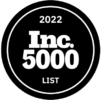- Laurie Wherley
- December 15, 2023
The warehousing industry, like many others, faces the pressing challenge of adjusting to the evolving workforce demographics. As Baby Boomers retire, the industry is seeing an influx of Millennial and Gen Z talent. Understanding their motivations, expectations, and values is crucial for businesses aiming to attract and retain these younger generations. This blog article dives into the strategies that warehousing and logistics companies can adopt to appeal to and keep Millennial and Gen Z workers.
Table of Contents
- Understanding the millennial and gen z motivations
- The expectation gap
- Tech-savvy warehousing
- A culture of values and growth
- Tailored recruitment strategies
- Addressing misconceptions
- Conclusion
- Streamlining staffing in the warehouse sector with Jobble
Understanding the millennial and gen z motivations
Before we delve into strategies, it’s vital to understand what drives these generations. While it’s risky to generalize, research has consistently shown that Millennials and Gen Z prioritize purpose over paycheck, value work-life balance, and are keen on continuous learning opportunities.
The expectation gap
As the global workforce undergoes a generational shift, companies are grappling with a transformative change in workplace expectations. Previous generations, especially the Baby Boomers, frequently placed a premium on job stability, often committing decades to a single company. This commitment was typically reciprocated with job security, predictable promotions, and a pension at retirement.
However, the career landscape has dramatically altered with the advent of Millennials and, more recently, Gen Z entering the fray. These newer generations come with a set of expectations quite different from their predecessors, resulting in what many term as an “expectation gap”.
Seeking purpose over paychecks
While a competitive salary remains important, it’s not the sole driving force for Millennials and Gen Z workers. They yearn for purpose and meaning in their roles. They’re not content with just clocking in and out; they want to feel that their work is contributing to a larger cause, whether that’s in terms of company objectives, societal changes, or global initiatives. In the warehousing sector, this might translate to roles that have a clear impact on sustainability, technology integration, or community outreach.
Growth and continuous learning
The world is changing rapidly, and young professionals want to keep pace. Opportunities for growth, both professional and personal, are paramount. Millennials and Gen Z prioritize companies that offer robust training programs, opportunities for upskilling, and a clear pathway for advancement. In the warehousing context, this might mean offering certifications in emerging technologies, leadership training programs, or pathways to more strategic roles within the organization.
A culture of inclusivity and flexibility
Company culture is no longer an afterthought. Younger workers are keenly aware of the environments in which they thrive, and they place a high premium on inclusivity, diversity, and flexibility. A rigid 9-to-5 schedule may not appeal to them as much as flexible hours, remote working options, or a hybrid model. They also seek workplaces where diversity is celebrated, and every voice is valued. For warehousing companies, this might involve rethinking shift schedules, offering part-time or seasonal roles, and fostering a diverse and inclusive work environment.
Feedback, recognition, and open dialogue
Gone are the days when employees would silently toil away, waiting for an annual review. Millennials and Gen Z crave continuous feedback. They want to know where they stand, how they can improve, and they want their achievements recognized. This feedback loop not only helps them in their roles but also fosters a sense of belonging and value within the organization. Warehousing businesses can adapt by implementing regular check-ins, peer reviews, and platforms for open dialogue.
Tech-savvy warehousing
Recognizing and rewarding employees for a job well done is crucial for maintaining a motivated and engaged warehouse team. Let’s explore why recognition and rewards are essential and discover ideas for implementing effective programs in your workplace.
In today’s rapidly evolving technological landscape, it’s no surprise that younger generations, having grown up with gadgets, apps, and the internet, display an innate comfort with digital tools. Their familiarity with technology is not just a casual acquaintance but often a deep-seated proficiency. This tech-savviness offers warehousing an incredible opportunity to modernize operations and appeal to these younger cohorts.
Robotics: The hands and feet of modern warehousing
Robotics has gradually made its way into warehousing, driven by the dual need for efficiency and accuracy. Automated guided vehicles (AGVs) and autonomous mobile robots (AMRs) now transport goods across vast warehouse floors, minimizing human error and speeding up processes. For Millennials and Gen Z, the integration of robotics is not a daunting prospect but an exciting feature of a progressive workplace. By positioning robotics as a collaborative tool rather than a replacement, companies can attract young talent eager to work alongside these technological marvels.
AI-driven inventory management
Artificial Intelligence (AI) is no longer confined to sci-fi novels. It’s here, and it’s revolutionizing how warehousing operates. Through AI-driven inventory management systems, warehousing businesses can predict stock levels, optimize storage space, and reduce wastage. These smart systems can adjust in real-time based on sales data, seasonal trends, and other influencing factors. For tech-savvy Millennials and Gen Z, the prospect of working with such advanced systems provides an allure. They’re not just looking for a job; they’re seeking a dynamic environment where they can harness technology to drive results.
Digital training platforms
Traditional training methods might not resonate with younger generations. They’re used to on-demand information, interactive platforms, and digital learning environments. Recognizing this, warehousing companies can implement digital training platforms that offer interactive tutorials, augmented reality (AR) guided tasks, and real-time feedback. Such platforms don’t just facilitate quicker and more effective learning; they make the training process engaging and aligned with the digital experiences that younger generations value.
Embracing augmented reality (AR) and virtual reality (VR)
Beyond digital training, AR and VR are making their mark in warehousing. AR can assist in picking and packing operations by overlaying digital information on physical objects, ensuring accuracy and speed. Meanwhile, VR can create realistic simulations for training purposes or design warehouse layouts for optimal efficiency. For young tech enthusiasts, the chance to use and influence the development of AR and VR applications in a warehousing setting can be a significant draw.
A culture of values and growth
In today’s evolving work landscape, job seekers, particularly from the Millennial and Gen Z cohorts, view their roles as more than just a source of income. For them, a job is an extension of their identity, beliefs, and aspirations. Companies can no longer merely offer a competitive salary and expect to attract top talent. Instead, businesses need to project a culture that aligns with the value systems and growth aspirations of these younger generations.
Deep dive into company values
In the age of information, transparency is non-negotiable. Millennials and Gen Z have access to vast amounts of information, and they’re adept at researching potential employers. They’re interested in knowing what a company stands for, its ethical stances, and how it contributes to the broader societal landscape.
Sustainability is a massive buzzword for these generations. They’re aware of the global challenges, from climate change to resource depletion, and they actively seek out employers who are part of the solution. For warehousing businesses, this could mean initiatives like adopting green energy sources, minimizing waste, or engaging in sustainable sourcing practices.
Corporate social responsibility (CSR) is another area under scrutiny. Warehousing businesses can engage in community outreach programs, support local initiatives, or even partner with NGOs to drive positive change. Demonstrating a genuine commitment to CSR can enhance a company’s reputation and appeal among these younger demographics.
Growth trajectories and learning curves
Stagnation is a deterrent for the ambitious Millennial and Gen Z workforce. They’re not just looking for a job; they’re scouting for a career—a journey where they can evolve, learn, and ascend. Warehousing businesses need to clearly articulate the growth trajectories available within the company. Whether it’s moving from a floor supervisor to an operations manager or transitioning from inventory control to supply chain optimization, clear pathways should be evident.
Furthermore, continuous learning is a significant draw. Warehousing, being an industry that is rapidly evolving with technological advancements, offers numerous learning opportunities. Companies can provide training programs on the latest warehousing tech, certifications in supply chain management, or even soft skills workshops that enhance leadership and communication abilities.
Beyond values and growth, the day-to-day culture of a workplace plays a pivotal role in retention. Warehousing businesses need to foster environments where collaboration is encouraged, innovation is celebrated, and diversity is the norm. Regular team-building exercises, feedback sessions, and open-door policies can significantly enhance the workplace vibe.
Tailored recruitment strategies
It’s essential for warehousing companies to speak the language of these younger generations. This means harnessing digital platforms for recruitment, showcasing employee testimonials, and offering a glimpse of the company culture through virtual tours or behind-the-scenes content.
Perks that matter
While competitive salaries are essential, younger workers also value perks like flexible working hours, health and wellness programs, and opportunities for remote work. Warehousing companies can explore offering such benefits to stand out as an employer of choice.
Sustainable practices
For many Millennial and Gen Z workers, a company’s commitment to sustainability can be a deal-maker or breaker. Warehousing operations, given their scale, have a considerable environmental footprint. Adopting and promoting green practices can significantly enhance a company’s appeal.
Fostering team cohesion
With the warehousing sector becoming increasingly multi-generational, it’s vital to foster a sense of belonging and cohesion. Team-building activities, mentorship programs, and platforms for open communication can help bridge any generational gaps.
Work-life balance
The warehousing sector, known for its demanding hours, needs to recognize the importance of work-life balance for its younger employees. This could mean offering more predictable shifts, opportunities for part-time work, or even mental health support.
Addressing misconceptions
In every era, younger generations have faced criticisms and stereotypes from their predecessors. The narratives of “Millennials are lazy” or “Gen Z can’t live without their phones” are contemporary examples of this age-old phenomenon. For the warehousing industry, navigating these misconceptions is not only a matter of fairness but also a strategic necessity. Embracing the unique strengths and capabilities of these generations can propel a business forward.
Conclusion
The dynamic world of warehousing is at an intersection of tradition and innovation, presenting a unique challenge for businesses aiming to integrate Millennial and Gen Z talent into their workforce. By fostering a culture of inclusivity, harnessing technological advancements, and promoting growth and values that resonate with younger generations, warehousing businesses can transform perceived challenges into substantial opportunities. The future of warehousing lies not in resisting this generational shift but in embracing it, understanding the nuances of each generation, and creating synergies that benefit both the company and its diverse workforce. With the right strategies in place, the warehousing industry can ensure a future that is both technologically advanced and human-centric.
Streamlining staffing in the warehouse sector with Jobble
Navigating the intricate maze of warehouse staffing can often be daunting. But with Jobble, you have a tailor-made solution that ensures smooth and efficient staffing. The recruitment process, notorious for its time-consuming nature, gets a refreshing makeover with Jobble. The platform offers a swift avenue to connect with competent temporary candidates, freeing you to focus on core business operations. Think of Jobble as the bridge that effortlessly connects employers with the ideal gig workforce.
Why choose Jobble for your staffing needs?
- Access to a vast pool of over 5 million gig workers
- Confidence in speedy role fulfillment, with 90% of roles filled in under 24 hours
- Streamlined and hassle-free onboarding, ensuring an effortless hiring journey
- A transparent, intuitive platform making hiring a breeze
Ready to experience staffing efficiency? Book a demo with Jobble today.

Learn More:










